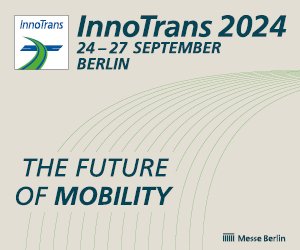Rail transport has always played an active part in the lives of the cities served by railways. However, in recent years, for several different reasons, this modal transport has been relegated to secondary importance within Government spheres. Passenger trains have been withdrawn, investments have dried up, and the transport of people and cargo has moved to the roads, often through lack of options.
The privatization of the operation of rail services has not produced the results expected. The upturn in the investments in this segment were timid compared with needs, and did not bring about the necessary transformations in the Brazilian transport matrix.
The expansion of the rail segment in the total volume of cargo transported was concentrated in specific business segments, linked to the interests of the controlling groups of the concessions, even though there has been a significant increase in the production of typical rail-transported cargo, like agricultural products and, more recently, industrial production. With restricted competition, the reference of road freight ended up being that practiced by road transport, with different characteristics and a higher cost per transported tone.
This scenario started to change with the Railway Revitalization Plan in May 2003. Thus, there was a process of review of the model adopted, and then an objective upturn in investments in the expansion of the rail network was promoted.
At present, nearly 5 thousand kilometers of new railways are either in the tender stage or being constructed. Out of this total, nearly 1,360 km shall start operation later in 2010 and the rest at the end of 2012. These would be modern railways, constructed based on the concept of structuring axes for shipment of production. Another 15 thousand kilometers are currently being planned, for implementation through to 2015, without counting the interventions to the existing systems to modernize them or make them efficient.
With the new railways being articulated to the existing system of routes, Brazil shall have an integrated rail transport corridor from North to South, from East to West and also an exit to the Pacific Ocean. This means that thousand kilometers of trucks shall be taken off the roads, and the users of the rail system shall be able to choose between 15 ports for shipping their exports.
For these investments to rapidly become a reduction of logistics costs, a new regulatory mark and a new concession model are being implemented.
These instruments shall be valid for the new railways and also to guide a possible renegotiation of existing contracts, to bring them into line with Brazil’s transport needs.
These measures, strengthened by a new set of Regulations for Rail Transport, which is about to be announced, shall create conditions to bring even more competitivity and more efficiency to the railways.
There is a need to make the reference marks clearer, so as to consolidate the rules for competitive coexistence between the operators, including passage rights, which shall allow the trains of one concession to use the rail network of another concession. The users dependent on the railways shall then have the liberty to create dedicated services, thereby allowing that they directly manage the costs of the services. A more competitive environment on the railways shall lead to a more appropriate process of pricing for the services considered.
The management of the present concession contracts shall also be enhanced, to allow the efficient exploitation of the network placed under concession. Currently, out of the 29 thousand kilometers of Brazilian railways, less than 11 thousand kilometers are exploited, with the rest being either idle or underused.
Aside from the expansion in the cargo area, there is also another market niche to be exploited, that of conventional medium-speed trains for regional connections and also for long-distance passenger transport, making use of the modern railway network that is currently being constructed.
Railways are strategic if a transport system allowing competitive and modern logistics to sustain economic growth is indeed constructed. And also, the changes that are currently under way will provide this segment with conditions to efficiently carry out the role that it should play in a country of continental size and with the prospects for economic growth that Brazil has today.
* Bernardo Figueiredo is the General Manager of the National Land Transport Agency (Agencia Nacional de Transportes Terrestres – ANTT)


Seja o primeiro a comentar